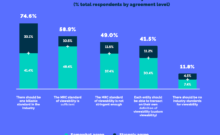Ad fraud is a major concern in the media industry, being rated as anything between a mild annoyance to the very death knell of programmatic advertising, depending where one sits on the issue. And if you thought this was a programmatic issue, studies show that direct to publisher campaigns also have 12% fraudulent impressions.
In the Asia Pacific (APAC), this is increasingly a critical issue, as the region’s total digital marketing spend is expected to reach $61 billion this year. As the market grows, the need to keep ad fraud at bay remains even stronger, especially when two out of the top five countries targeted by fraud on mobile are right here in the Southeast Asian region – Singapore and Malaysia. As consumers in Southeast Asia spend more time on mobile than any other market, the issue of fraud prevention warrants increasingly more attention.
With advertisers globally expecting to lose $19 billion to fraudulent activities this year, platform providers are certainly taking this issue very seriously. Beyond financial losses, what is even more valuable and can’t be measured is the loss of trust within the industry, which makes it evident that we need to take serious steps to address this issue.
Everyone has a part to play
While regulatory bodies work on achieving a set of common operating standards, ad tech platforms have the power to get on board and make serious inroads into cleaning up the industry.
As part of the industry’s efforts to curb ad fraud, Interactive Advertising Bureau (IAB)’s ads.txt initiative, for example, gives content owners the power to deny access to fraudulent and spoofing sites. It is even more encouraging to see platform players jump on board and bolster antifraud suits with the addition of ads.txt across supply footprints.
Read More at The Original Article: www.enterpriseinnovation.net









